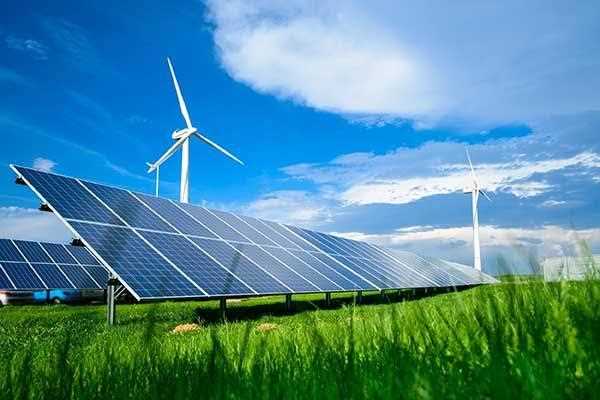The field of renewable energy is constantly evolving, driven by technological advancements, policy changes, and growing environmental concerns. Here are some of the latest updates and challenges in the field of renewable energy:

1. Advancements in Solar Energy: Solar power has seen significant advancements in recent years. The efficiency of solar panels has improved, making them more cost-effective and capable of generating more electricity from sunlight. Additionally, there have been developments in solar energy storage technologies, such as advanced batteries and innovative solutions like solar thermal storage.
2. Growing Wind Power Capacities: Wind energy has experienced substantial growth globally, with the installation of larger and more efficient wind turbines. Offshore wind farms are becoming increasingly popular due to the availability of stronger and more consistent wind resources. Floating wind turbines are also being explored as a potential solution to harness wind energy in deep waters.
3. Emergence of Energy Storage: Energy storage technologies have gained significant attention due to their ability to address the intermittent nature of renewable energy sources. Advances in battery technologies, such as lithium-ion batteries, have made energy storage more viable for both grid-scale applications and residential use. This helps in storing excess renewable energy during periods of high generation and utilizing it during periods of low generation.
4. Grid Integration and Management: Integrating large-scale renewable energy systems into existing power grids poses challenges. The intermittent nature of renewable sources requires smart grid management, energy storage systems, and demand-response programs to maintain grid stability and balance supply and demand. Grid infrastructure upgrades and enhanced transmission systems are necessary to accommodate the increasing penetration of renewable energy.
5. Policy and Regulatory Frameworks: Governments worldwide are implementing policies and regulations to promote renewable energy adoption. Feed-in tariffs, tax incentives, renewable portfolio standards, and carbon pricing mechanisms are being introduced to encourage investments in renewable energy projects. However, policy uncertainties, changes in government priorities, and inconsistent regulations across different regions can hinder the growth of renewable energy.
6. Cost Competitiveness and Financial Support: The cost of renewable energy technologies has been declining steadily, making them increasingly competitive with conventional energy sources. However, upfront costs and access to financing remain significant challenges, especially for developing countries. Financial mechanisms such as green bonds, public-private partnerships, and international funding initiatives are being explored to support renewable energy projects.
7. Electrification of Transportation: The shift towards electric vehicles (EVs) presents both opportunities and challenges for renewable energy. EVs can contribute to grid stability through vehicle-to-grid (V2G) technology, allowing bidirectional flow of electricity. However, accommodating the increased electricity demand from EV charging infrastructure and managing the charging load to align with renewable energy generation patterns pose grid management challenges.
8. Environmental Considerations: While renewable energy sources are cleaner than fossil fuels, their deployment is not without environmental challenges. The production, disposal, and recycling of renewable energy infrastructure components, such as solar panels and wind turbines, require careful management to minimize environmental impacts.
In summary, the latest updates in renewable energy revolve around advancements in solar and wind technologies, energy storage, grid integration, and policy support. However, challenges persist in grid management, financing, policy uncertainties, and environmental considerations. Addressing these challenges will be crucial for accelerating the adoption of renewable energy and transitioning towards a sustainable energy future.